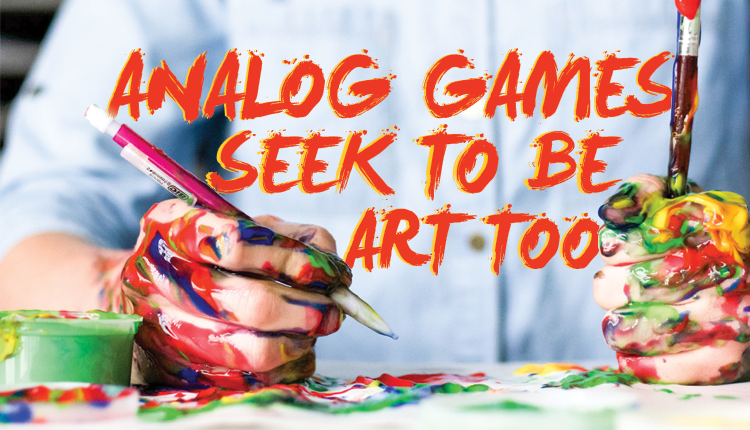So far in “Challenging Assumptions: On Art & Videogames” we’ve talked extensively from an Art-first perspective, analyzing how artists use formal game creation tools and exploring game developers with artistic aims. I promise, John Sharp explores the medium of videogames on their own terms in Works of Game, but we’re not quite there yet. Before we arrive, let’s take a last look at an art driven classification that doesn’t fit neatly within the previously defined categories: artists’ games.
Some context– John Sharp begins this chapter by calling on the philosopher John Hospers who explains two concepts: thick aesthetics and thin aesthetics. “Thin aesthetics are those that focus solely on the formal values of a work, while thick aesthetics… take into account the work’s place in… cultural contexts.” Something that is aesthetically thin cares only for formal perfection, the relationship between line, color, and light for instance. While “thick” aesthetics “ground a work in the more nuanced realm of experience.”

Essentially, these are points of view held by a given community, not the work itself, that inspires how they think and view the work. Here, Sharp claims that game art like Super Mario Trilogy from the prior article would appear to be aesthetically thin for videogame players, due to its simplistic nature of play, while contemporary art goers would consider it thick for its presentation of critical and conceptual themes. Conversely, Jonathan Blow’s Braid would be considered thick by videogame experts for its use of mechanics, but thin for art goers because of its focus on a singular idea. Artists’ Games are where the two intersect: when a work is aesthetically thick in its gamification and conceptual rigor.
John Sharp describes several games at great length that embody this concept, but relaying every bit of detail goes beyond the scope of this series. Instead, we’ll focus on the conclusions he draws about play as a medium and the participatory character of the experience.
Each work Sharp highlights as an Artists’ Game requires participation from the viewer/player. He mentions that as early as the late 18th century, play was seen as a critical component in art, but only in the process of art creation. Now, artists have begun to recognize play as a form in and of itself where the viewer assists in a partial creation of the work. In this new conceptual lineage, games are just a vessel for which the ultimate form of play is manifested.
(This next paragraph puts concrete words to the ways I’ve felt about videogames and gameplay, and helps me now explain why I think play is the most important aspect to the medium– not story or anything else.)
More specifically, “participatory art is an emphasis on process and experience over product.” This idea explains why in games “the process is the product.” The construction of a game’s rules, playspace, and goals lends itself to a set of experiences and outcomes that the participant discovers and creates with the work and, by extension, the artist. Lastly, this exhibits the transient nature of games and play, in that “the play experience cannot be known until the game is played.”
(Mic drop moment. This crystallizes why I feel the need to constantly assert that gameplay is a game’s strongest asset. I wish gamers focused on compelling play experiences over narrative. In my opinion, you’ve only told a good story in a videogame if the narrative is only experienced by actively playing it. Not listening to, reading, or watching it with your controller down.)
To conclude this article, I’m going to list a few of the works, none of which are strictly videogames, that John Sharp analyzes so that you can look them up and learn about them on your own time.
- Open Score by Robert Rauschenburg and Jim McGee positions an audience around a tennis match, while dimming lights correspond to the pace of the ball hitting the rackets in order to harness play into an engine for music making and performance.
- Blast Theory’s Uncle Roy All Around You puts museum goers into a cooperative game that extends beyond the museum it starts in, with the ultimate goal of committing two strangers to be each other’s emergency contact for a year.
- Sixteen Tons by Nathalie Pozzi and Eric Zimmerman is a large installation inside a museum that creates a separate playspace meant to change patrons’ usual art-viewing behavior. The game’s rules are told by short instruction and even musical lyrics, and the players’ actions creates commentary on working class life, gambling, and a game’s status as a mass market product.

Finally, we have an understanding of the purpose of Artists’ Games. These works seek to intricately create systems-based activities where the form of play takes center stage as a vessel for conceptual learning. None of the examples in this chapter took the form of a videogame. Perhaps John Sharp thinks our medium has yet to produce a strong enough example.
All ideas in this article were pulled from Works of Game: On Aesthetics of Game and Art. More specifically, chapter 4.
Edited by Malia Hamilton
Originally published on OK Beast
